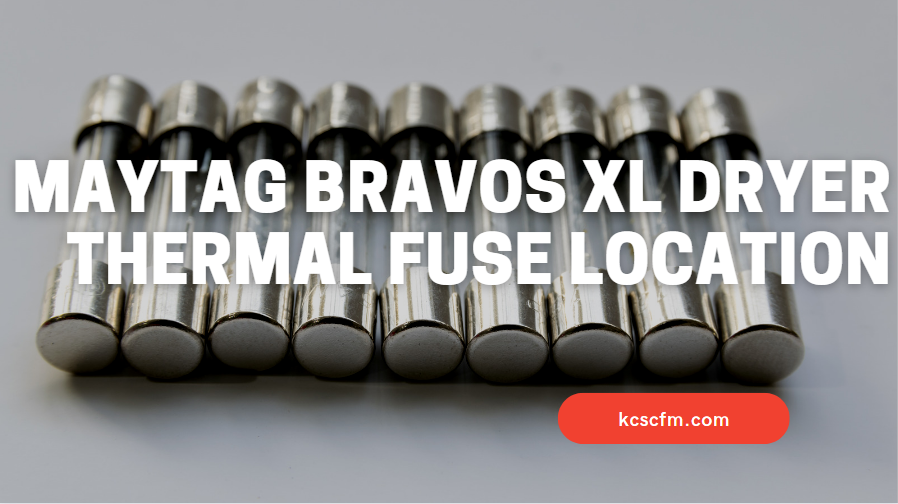The Maytag Bravos XL dryer is an energy efficient dryer that has a thermal fuse located near the back of the machine. This thermal fuse is a safety device that will shut off the dryer if it overheats. Knowing the location of this fuse is important if you ever need to replace it. It can be easily accessed by removing the back panel of the dryer.
Once the panel is removed, the thermal fuse can be located near the blower wheel. It is important to turn off the power to the dryer before attempting to access or replace the thermal fuse.
Maytag Bravos Xl Dryer Thermal Fuse Location

The Maytag Bravos XL dryer is a high–efficiency dryer with a variety of features that make it a great addition to any home. It’s designed to help you get the job done quickly and efficiently, so you can enjoy freshly–dried clothes in no time.
The Bravos XL dryer features a large 7.3 cubic foot capacity, 13 cycles, and several features that make it energy efficient and easy to use.
Identifying and Locating the Thermal Fuse
The thermal fuse on a Maytag Bravos XL dryer is an important safety device designed to shut off power to the dryer if it overheats. Located on the blower housing or at the dryer’s heat source, the thermal fuse should be the first part you check if the dryer stops producing heat. Fortunately, locating and replacing the thermal fuse is a relatively simple task.
To locate the thermal fuse in a Maytag Bravos XL dryer, first unplug the dryer from the wall outlet. Next, open the dryer’s cabinet by removing the screws at the top and bottom of the back panel.
Once the back panel is removed, you will be able to view the dryer’s blower housing and the thermal fuse. The thermal fuse is typically mounted on the blower housing near the dryer’s heat source. It will be a small white plastic device with two wires attached.
Once you have located the thermal fuse, disconnect the two wires and test the fuse with an ohm meter. If the fuse is blown, it will need to be replaced with an identical fuse.
Make sure to use a fuse that is approved for your model of dryer. Finally, reattach the wires and replace the back panel.
By locating and replacing the thermal fuse on a Maytag Bravos XL dryer, you can help ensure the safety of your dryer and the safety of your home. This simple task should only take a few minutes, and can potentially save you time and money in the future.
Testing the Thermal Fuse
To test the thermal fuse, you’ll need a multimeter. First, unplug the dryer and locate the thermal fuse. Remove the screws or clips that secure the thermal fuse in place and carefully remove it.
Once it has been removed, use the multimeter to test the fuse for continuity. If there is no continuity, the thermal fuse has blown and needs to be replaced. If the thermal fuse is not blown, the next step is to check the dryer’s heating element. To do this, plug the dryer back in and start a cycle.
If the dryer does not heat up, this indicates that the heating element is not working properly and will need to be replaced. It is important to remember that the thermal fuse is a safety device and should be replaced as soon as possible if it is found to be blown.
Replacing the thermal fuse is easy, but it should be done by a qualified technician or someone with experience working on dryers.
Conclusion
The Maytag Bravos XL dryer‘s thermal fuse is an important safety feature that helps prevent fires in the event of an electrical malfunction.
The thermal fuse is located on the blower housing, behind the front panel.
It is important to regularly check the thermal fuse and replace it if it shows signs of wear or damage. Following this maintenance routine can help keep your Maytag Bravos XL dryer in good working order and help protect you and your home from the danger of a dryer fire.

Hi there! I’m Sam Hendricks, and I’m a repair technician and expert. I created this website to help people like you save money and time by fixing your own appliances.
Over the years, I’ve seen people spend a lot of money on unnecessary repairs or replacements. That’s why I decided to share my expertise and create easy-to-follow guides for fixing appliances on your own.
